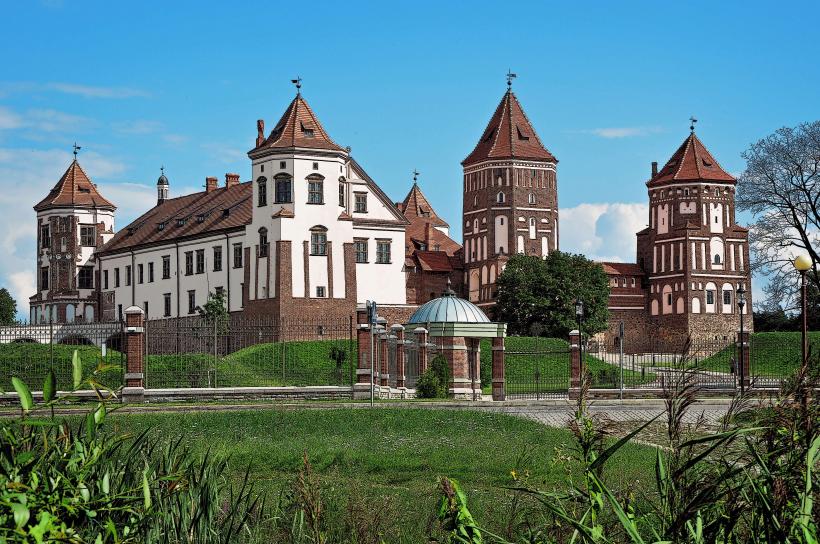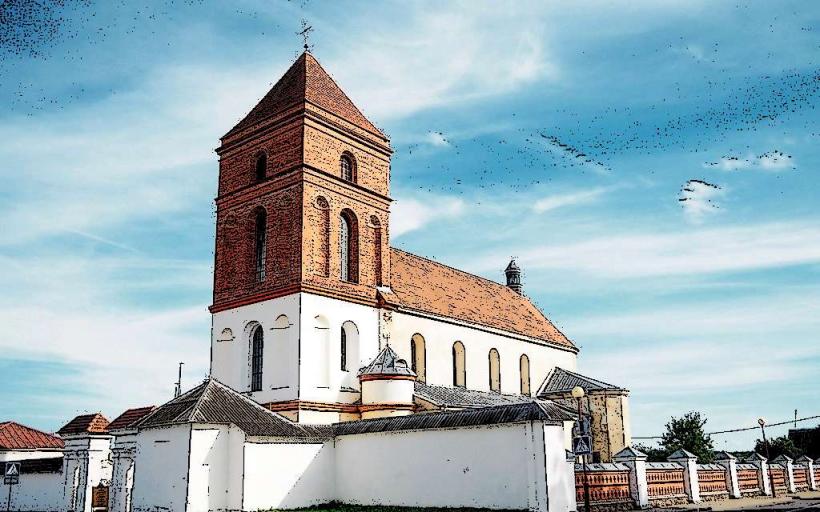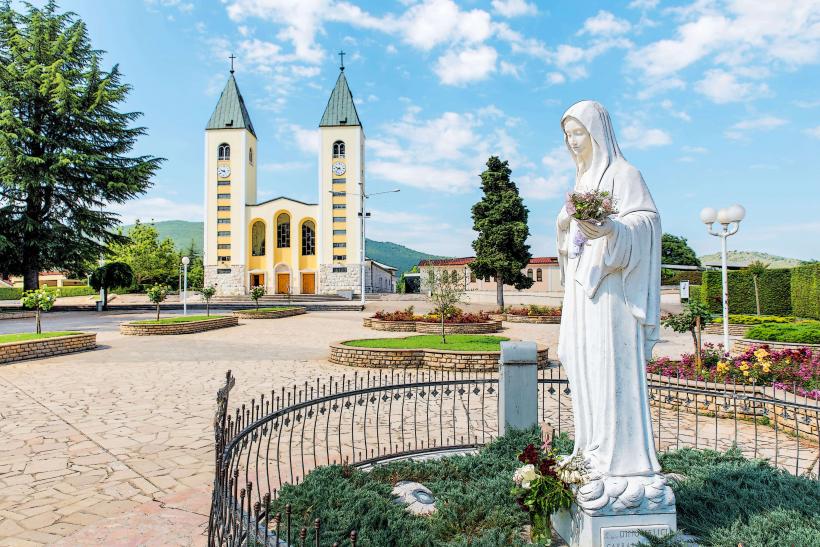Information
Landmark: Holocaust MemorialCity: Mir
Country: Belarus
Continent: Europe
A Holocaust Memorial refers to a structure or site dedicated to remembering the victims of the Holocaust, the systematic state-sponsored genocide perpetrated by Nazi Germany during World War II, which led to the deaths of approximately six million Jews, as well as millions of others, including Roma, disabled individuals, Slavs, political dissidents, and others whom the Nazis considered "undesirable."
Holocaust memorials exist in many forms around the world, ranging from museums and monuments to educational centers. They serve to honor the victims, raise awareness about the atrocities committed, and ensure that such events are never forgotten. Below are some notable examples and their significance.
General Significance of Holocaust Memorials
Commemoration of Victims:
- These memorials are designed to honor the lives lost in the Holocaust, acknowledging the immense suffering and trauma endured by the victims.
Educational Purpose:
- Many Holocaust memorials aim to educate future generations about the horrors of the Holocaust, the dangers of prejudice and discrimination, and the importance of human rights.
- They provide a platform for remembering and reflecting on the lessons of the Holocaust, helping to ensure that such atrocities are not repeated.
Moral and Ethical Reflection:
- Holocaust memorials are spaces for visitors to reflect on the ethical implications of the Holocaust, the role of indifference and complicity, and the impact of unchecked hatred.
Political and Cultural Impact:
- These sites are crucial for fostering dialogue about the consequences of fascism, racism, and totalitarianism in history. They also serve as important symbols of the resilience of the human spirit.
Notable Holocaust Memorials
1. United States Holocaust Memorial Museum (Washington, D.C., USA)
- History and Purpose: Established in 1993, this museum serves as a living memorial to the Holocaust. Its mission is to inspire citizens and leaders worldwide to confront hatred, prevent genocide, and promote human dignity.
- Exhibitions: The museum features permanent and temporary exhibits, including photos, films, artifacts, and personal testimonies of survivors. The "Permanent Exhibition" offers a chronological history of the Holocaust.
- Educational Role: The museum is not only a memorial but also a center for research and education, offering resources for teachers and students.
2. Yad Vashem (Jerusalem, Israel)
- History and Purpose: Yad Vashem, Israel's official Holocaust memorial, was established in 1953. It honors the memory of Jewish victims and those who helped Jews during the Holocaust.
- Key Features: The Hall of Names contains the records of Holocaust victims, and the Children's Memorial remembers the 1.5 million Jewish children who were murdered.
- Educational Role: It serves as a global center for Holocaust education, preserving the memory of the atrocities and educating about the dangers of anti-Semitism.
3. Auschwitz-Birkenau Memorial and Museum (Oświęcim, Poland)
- Historical Significance: Located at the site of the largest Nazi concentration and extermination camp, Auschwitz-Birkenau was responsible for the deaths of over 1.1 million people, the vast majority of them Jews.
- Monuments and Exhibits: The site includes the preserved remains of the camps, including gas chambers, barracks, and crematoria. Exhibits showcase personal belongings of the victims, photographs, and historical documents.
- Educational Role: The memorial is dedicated to educating about the Holocaust and fostering dialogue between different cultures to promote tolerance and understanding.
4. Memorial to the Murdered Jews of Europe (Berlin, Germany)
- Design and Architecture: This memorial, completed in 2005, consists of 2,711 concrete slabs of varying heights arranged in a grid pattern, symbolizing the vast scale and the disorientation of the Holocaust experience.
- Symbolism: The memorial does not feature names or direct representation of specific events but creates a space for contemplation and personal reflection. It is designed to evoke a sense of emptiness and loss.
- The Underground Information Center: Located beneath the memorial, this center provides information about the Holocaust, focusing on individual stories and experiences of the victims.
5. The Holodomor Memorial (Kyiv, Ukraine)
- Significance: While not directly related to the Holocaust, the Holodomor Memorial in Kyiv commemorates the victims of the Holodomor, a man-made famine in the Soviet Union from 1932-1933, which resulted in the deaths of millions of Ukrainians.
- Context: It serves as a memorial to the victims of Stalin's regime and highlights the broader context of genocide, including the destruction of nations and communities by oppressive regimes.
6. The Anne Frank House (Amsterdam, Netherlands)
- History and Purpose: The Anne Frank House is dedicated to the life and legacy of Anne Frank, a Jewish girl who wrote a diary documenting her life in hiding during the Nazi occupation of the Netherlands.
- Exhibits: The museum preserves the secret annex where Anne Frank and her family hid and where Anne wrote her famous diary. The exhibits focus on her life, the Holocaust, and the importance of fighting discrimination and hate.
7. The Mémorial de la Shoah (Paris, France)
- History and Purpose: The Mémorial de la Shoah in Paris is dedicated to the memory of the Jewish victims of the Holocaust in France. It opened in 2005 and includes exhibitions and archives about the fate of Jews in France during World War II.
- Key Features: The memorial includes the Wall of the Righteous, honoring those non-Jews who risked their lives to save Jews during the Holocaust.
The Role of Holocaust Memorials in Modern Society
Preserving Memory:
- As survivors of the Holocaust age, these memorials play an increasingly critical role in keeping the memory of the Holocaust alive. They serve as sites of education and remembrance for future generations.
Combating Denial and Revisionism:
- Holocaust denial and revisionism are persistent challenges. Memorials act as powerful countermeasures against these ideologies by preserving historical facts and ensuring that the atrocities are never forgotten.
Fostering Global Tolerance:
- By remembering the consequences of unchecked hatred and bigotry, Holocaust memorials encourage a global commitment to tolerance, human rights, and the prevention of future genocides.
Holocaust memorials are essential not only for remembering the victims but also for educating about the dangers of hatred, racism, and intolerance. They serve as reminders of the dark chapters in history, urging individuals and societies to stand against prejudice and violence in all its forms.




